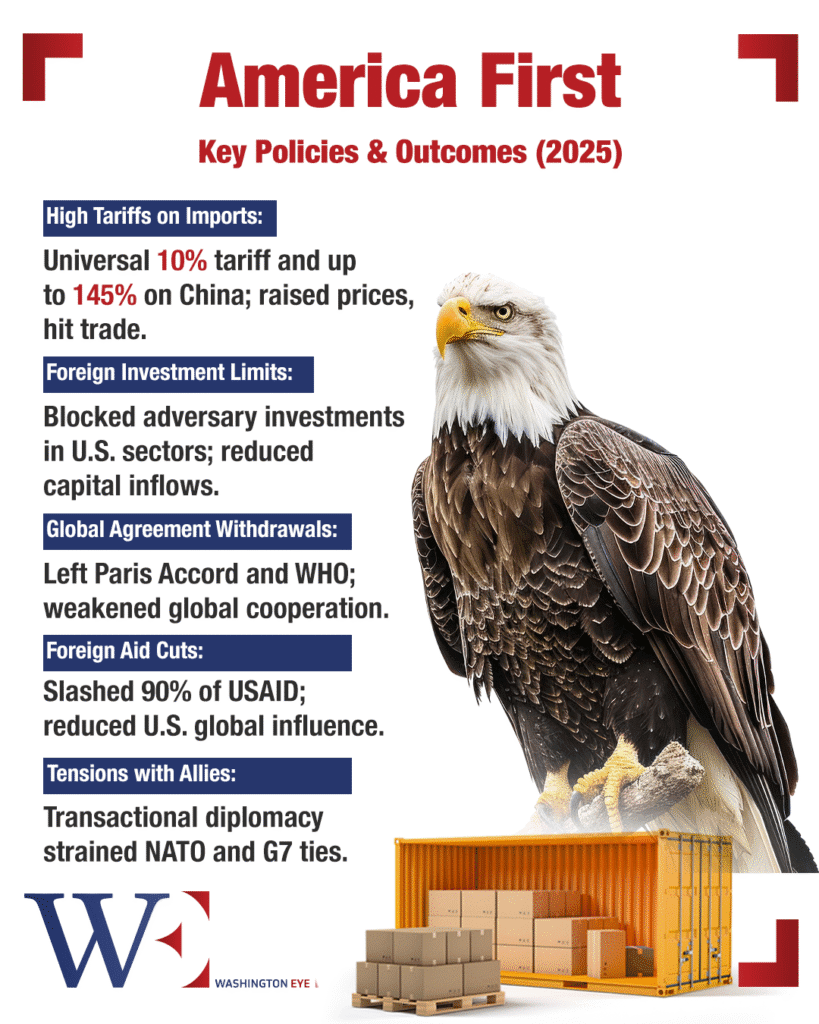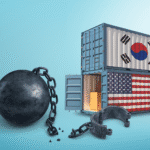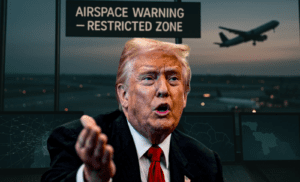With President Donald Trump settling into the early months of his second term in 2025, trade protectionism is once again taking center stage in Washington. His administration’s latest move—dubbed the “Liberation Day” tariffs—includes sweeping new duties on imports from strategic rivals and key manufacturing sectors. While branded as a boost to American industry, early data and expert analysis show that the economic pain is being felt most acutely at home.
Wall Street Reacts: A Slide into Uncertainty
Immediately following the tariff announcement, U.S. financial markets were rattled. The S&P 500 plunged by 4.8%, its sharpest daily drop since the pandemic era. The Russell 2000, representing smaller, domestically focused firms, fell more than 20% from its recent high, entering bear market territory. Analysts attributed the downturn to growing fears of a policy-driven slowdown and higher inflation.
Markets are pricing in the risk that prolonged trade barriers could squeeze corporate profits, limit consumer spending, and force the Federal Reserve into a difficult position on interest rates.
Inflation Surge & Growth Headwinds
Federal Reserve Chair Jerome Powell recently acknowledged that tariffs are “likely to push up inflation and slow economic growth”. The costs of key goods—especially those relying on imported components—are expected to rise sharply, pressuring household budgets already strained by lingering inflation from earlier global shocks.
New economic modeling from Australia’s Centre of Policy Studies predicts that the U.S. will bear the greatest GDP losses globally due to Trump’s 2025 tariff hikes, estimating a 0.7% contraction in national output.
Clean Energy and Tech: Progress in Peril
Tariffs on clean energy inputs—like solar panels, wind turbines, and lithium batteries—are drawing fierce criticism from environmental advocates and business groups. These components are overwhelmingly imported, and tariff-driven cost increases are expected to slow the rollout of renewable energy infrastructure, undermining climate goals and delaying the transition to a green economy.
Increased costs will likely be passed on to consumers and local governments, forcing project delays or cancellations, particularly in solar installations and EV battery production.
Manufacturing Rebound? It’s Complicated
President Trump insists that the tariffs will rebuild American industry by making foreign goods less competitive. However, research shows mixed results. While domestic steel and aluminum producers might benefit temporarily, industries dependent on global supply chains—such as automotive, semiconductors, and heavy machinery—face higher input costs and reduced competitiveness.
Moreover, it has been pointed out that multinationals are adapting by shifting sourcing and operations outside the U.S. rather than reshoring them—dampening the job creation narrative tied to protectionism, according to Emerald Insight.
Jobs and Wages: The Myth of “Reindustrialization”
The promise of mass job creation has proven elusive. According to the Tax Foundation, tariffs tend to reduce employment by raising production costs and consumer prices, eroding demand and profitability. Downstream industries—those that buy raw materials or parts—are especially vulnerable to job losses, potentially negating employment gains in protected sectors.
Past analyses also suggest that small manufacturers, without the flexibility to diversify suppliers or raise prices, are particularly at risk of layoffs or closures.
The Macro View: GDP and National Productivity
From a macroeconomic perspective, tariffs act as a drag on national efficiency. By insulating certain sectors from competition, they reduce incentives for innovation and productivity gains. Historical studies confirm that long-term use of tariffs correlates with lower GDP growth and diminished economic dynamism.
Despite short-term boosts to certain industries, the broader economic toll—from higher consumer prices to reduced capital investment—suggests that tariffs are an expensive way to pursue industrial policy.
A Final Note: A High-Stakes Economic Experiment
With President Trump now firmly steering U.S. economic policy toward protectionism, the consequences are playing out in real time. So far, the evidence indicates that while tariffs may appeal politically, they risk undermining core economic strengths—competitive markets, innovation, and global supply chain integration. Whether the strategy pays off in the long term remains to be seen. But in the short term, the data paints a clear picture: tariffs are a tax on American consumers, workers, and businesses.
















